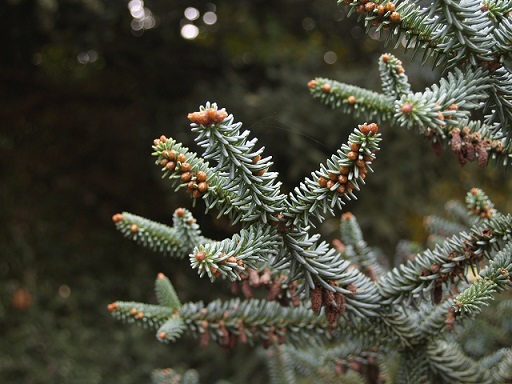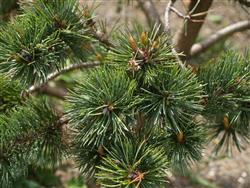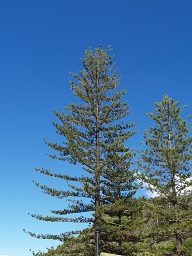Learn about growing conifers
Eight lessons provide you with a systematic understanding of the way
conifers are classified, show you how to identify the differences
between types and develop your understanding of cultural requirements
common to the whole group and differences in cultural techniques needed
for specific types of conifers. Sections of this course look in detail
at trees (e.g. Pines, Cedrus, Spruce), small shrubs, medium shrubs,
native conifers and rarer varieties.

Course Structure
- Introduction
Review the system of plant identification, general characteristics
of the conifer plant group, information contacts you can use (ie:
nurseries, seed, clubs, etc).
- Culture
Planting, staking, mulching, watering, pest & disease, feeding,
pruning, protection from wind, salt air, propagation, etc.
- Trees
Conifers that reach tree proportions, their characteristics and
requirements, how to grow conifers by seed propagation and grafting
techniques.
- Common Medium Size Shrubs
Many conifers fall into this height category. Some of the popular
conifers are Chamaecyparis, Juniperus and Thuja. How to prune conifers.
- Small Shrubs
How to choose small and prostrate conifers and their care. How to care for seedlings up to planting out stage.
- Australian Native Conifers
Araucaria, Callitris, Podocarpus are three good conifers for use.
The importance of environmental zones in Australia and how it can effect
plant growth.
- Rarer Conifers
Hemlocks, Podocarpus, Larches and leaf characteristics of Cephalataxus.
- Using Conifers
As timber, oils, edible seed, Christmas trees, etc.
- Landscaping with Conifers

Aims
Upon completing this course you should be able to do the following:
- Distinguish between different types of conifers in cultivation,
including twenty-five different genera and fifty different varieties.
- Specify the general cultural requirements of different conifer genera.
- Determine specific cultural requirements for some commonly cultivated conifer species.
- Specify specific cultural requirements for some lesser grown conifers, including Australian native and uncommon species.
- Determine different commercial applications for conifers in horticulture.
- Prepare a planting design using conifers.
Learn to be more Successful Growing Conifers
Conifers come in all shapes and sizes from ground covers to tall trees. Some are better suited to hot climates than cold, and others more tolerant of drier climates than wet. You learn about which netter suits which situation as you progress through this course.
In general though, conifers require similar basic care that might be expected for all plants; such as fresh air, good soil, ample water, fertiliser, protection from pest and disease, appropriate temperatures, etc.
Fresh Air

Conifers tend to originate in mountainous zones of the world. As such they have a reference for clean non-polluted air. The gardener in such a location has an advantage.
For the gardener who does not live in ideal locations, then a few steps will help in growing your conifers:
- allow plenty of space between plants to maximise ventilation
- do not locate conifers near the driveway or where cars park or idle
- reduce the use of any products that increase air pollution
Sloped land tends to have more air movement at ground surface than flat land. This feature could be utilised to help conifers grow better by aiding ventilation.
Soil
Conifers prefer most well drained fertile soils. Excessively sandy or clay soils are generally not liked by most.
If establishing conifers on clay based soil it is important to raise the level of soil, by either importing fresh soil onto your property or by adding bulk to the existing soil (i.e. adding compost). Both methods should treat the existing soil first with gypsum powder to be dug into the clay or a liquid soil ameliorant solution, liberally applied to the soil. It is imperative to get the root system above the established water table. For this reason raised garden beds should be about 30cm minimum high. Sloped land will aid drainage, but may actually impede water penetration as most rainfall will just wash over the surface and travel downhill.
Water
Conifers are best kept moist but never wet. Exception to this rule includes the swamp cypress (Taxodium distichum).
Allowing the root zone to dry out may increase sunburn damage due to the dehydration effect on the plant.
Most conifers handle the occasional dry spell well but should never be subjected to drought. Newly planted specimens should be well watered until established. It is important that young evergreen conifers receive adequate water during autumn as a dry root system in winter may be disastrous.
When watering by irrigation it is best to water in such a manner as to avoid excessive wetting of the foliage. Applying water directly to the roots, by drip irrigation or low-riser sprinklers, is regarded as a better watering technique compared to overhead watering. Wet foliage may lead to increased humidity and decline in conifer health.